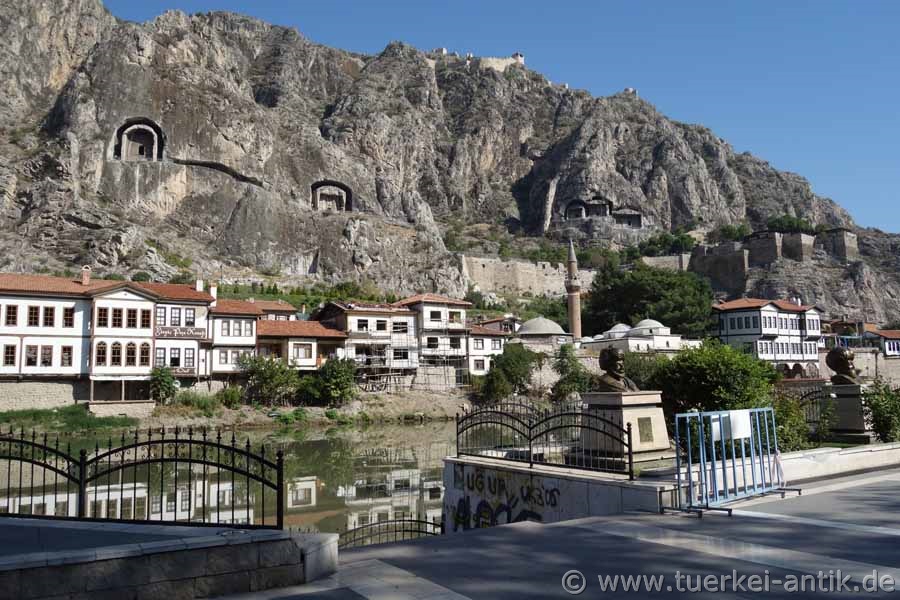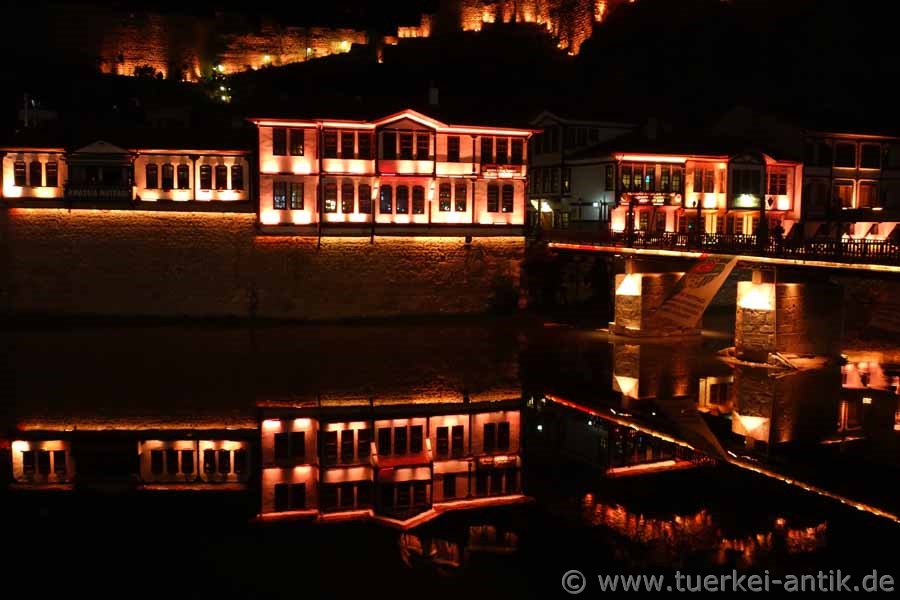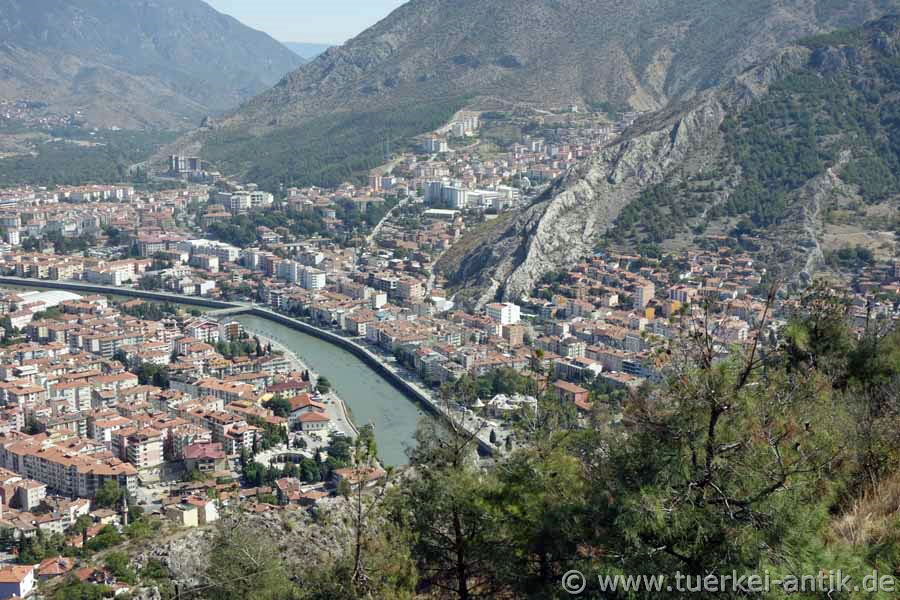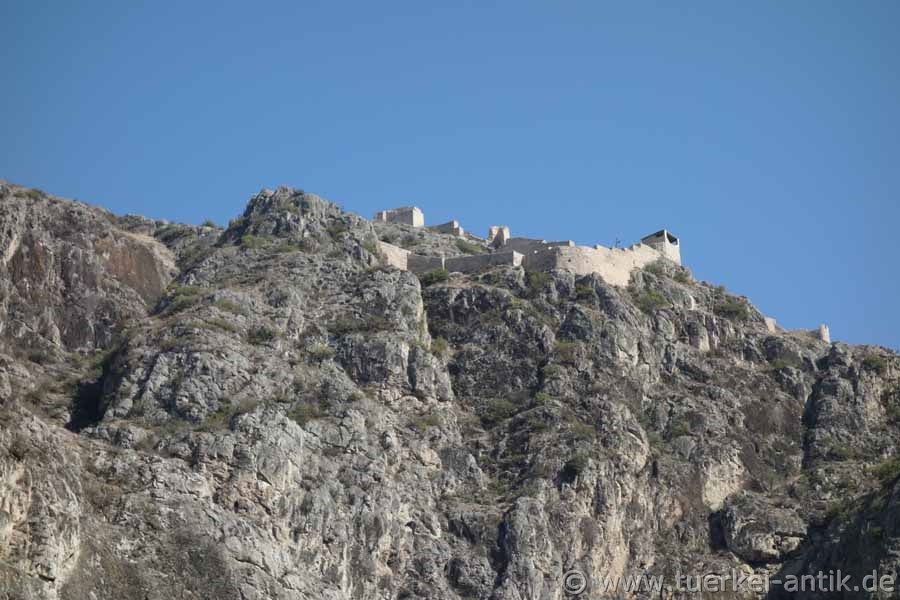 |
| Amasya | |||
 |
|
||
| Renovated late Ottoman houses in front of the Pontic royal tombs | |||
 |
|||
| The Ottoman houses illuminated at night are reflected in Yeşilırmak | |||
|
Amasya lies in the hinterland of the Black Sea coast in the Pontic Mountains in the narrow valley of the river Yeşilırmak at 390 m above sea level. |
|||
|
|
|||
| Pontic King's Tomb | |||
|
In late antiquity, the city of Metropolis was the province of Diospontus or Helenopontus, in Byzantine times the seat of the Armeniacon theme. The Danischmenden emir Danischmend Ghazi conquered the city in 1075 and held it until it passed to the Seljuk ruler Kiliç Arslan II in the late 12th century. In the Turkish Liberation War Mustafa Kemal called from here to the national resistance on 22 June 1919 and called the congress of Sivas. |
|||
|
|
|||
| View from the castle | |||
|
The city of Amasya ( turkish pronunciation: [aˈmasja] ), lies in the mountains above the Black Sea coast and is separated from the rest of Anatolia in a narrow valley on the banks of the Yeşilırmak river. Although it is close to the Black Sea, this area lies high above the coast and has an inland climate suitable for growing apples, for which the province of Amasya is famous. |
|||
|
|
|||
| Amasya Kalesi over the city | |||
|
|
|||
|
About 250 m above the city lies the well-preserved castle, which in parts still has Hellenistic masonry, but in its present form is mostly Byzantine. The town and castle were enclosed by a wall, some of which is still well preserved today. In the rock below the castle there are five chamber tombs with facades in an impressive location, which are to be attributed to the first five kings of Pontos. |
|||
|
|
|||
|
|
|||
| Amasya Kalesi | |||
|
|
|||
|
Amasya was the home of the geographer Strabo and the birthplace of the scholar and doctor Amirdovlat Amasiatsi from the 15th century. The city has a 7,500 year long history, which has left many traces until today. In ancient times Amaseia was a fortified town high on the cliffs above the river. From it came kings and princes, artists, scientists, poets and thinkers; from the kings of Pontus to the geographer Strabo to many generations of the Ottoman imperial dynasty. With its Ottoman wooden houses and the tombs of the Pontus kings carved into the rocks, Amasya is attractive to visitors. In recent years much has been invested in tourism. Today more foreign and Turkish tourists visit the city. During the early Ottoman rule it was common for young Ottoman princes to be sent to Amasya to rule and gain experience. Amasya was also the birthplace of the Ottoman Sultans Murad I and Selim I. It is therefore of great importance for Ottoman history. Traditional Ottoman houses near the Yeşilırmak and other historic buildings have been restored. These traditional Ottoman wooden houses are now used as cafes, restaurants, pubs and hotels. |
|||
|
|
|||
|
|
|||
|
Busts of Ottoman Sultans |
|||
| Photos: @chim, Monika P. | |||
| Translation aid: www.DeepL.com/Translator | |||
| Source: Wikipedia and others | |||
|
|
|||



